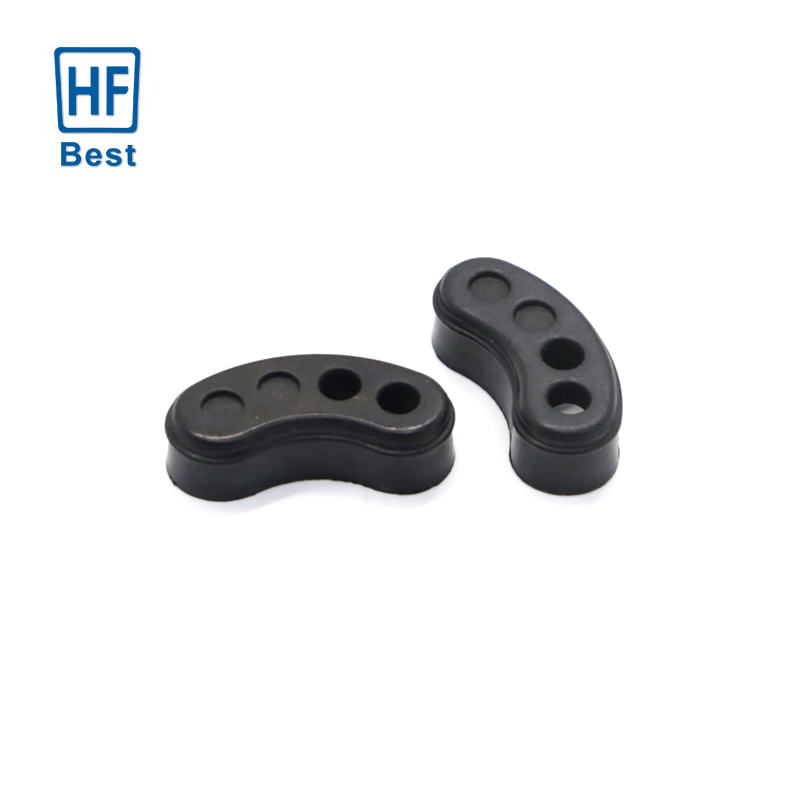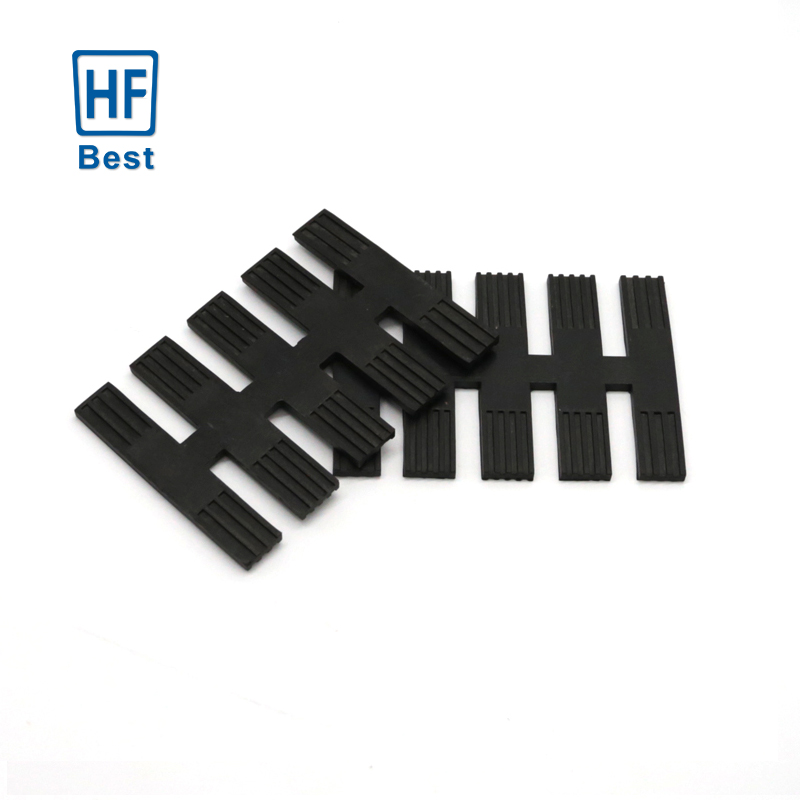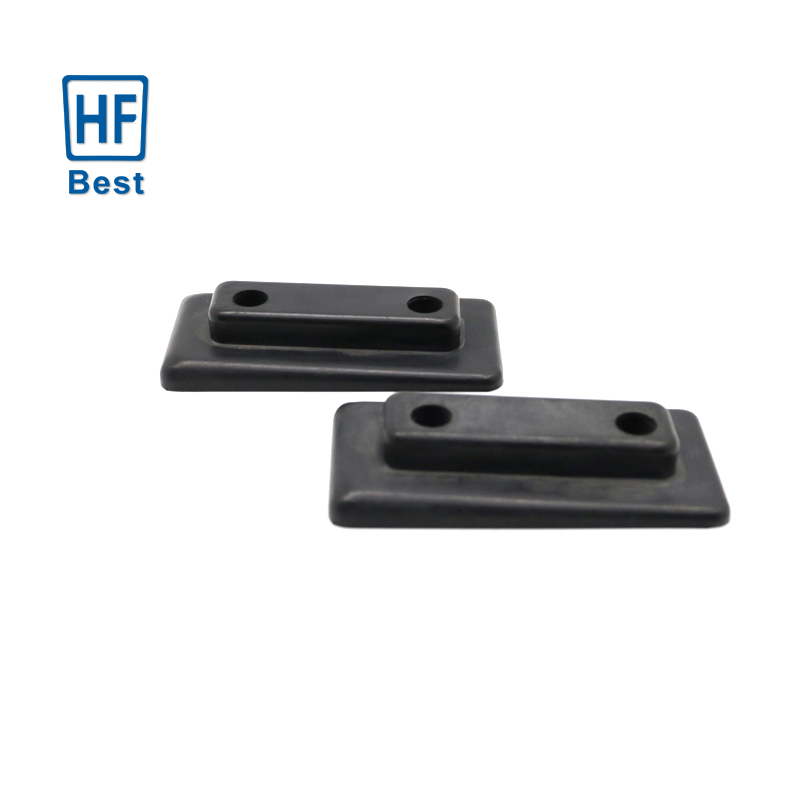News
- Industry news
Industry news
Today's science: ethylene propylene rubber
What is ethylene propylene rubber?
Ethylene propylene rubber is a synthetic rubber with ethylene and propylene as the main monomer. According to the different composition of monomer in the molecular chain, there are two ethylene propylene rubber and three ethylene propylene rubber. The former is the copolymer of ethylene and propylene, which is represented by EPM, and the latter is the copolymer of ethylene, propylene and a small amount of unconjugated diolefin third monomer, which is represented by EPDM. They are collectively referred to as ethylene propylene rubber (EPR). Ethylene propylene rubber is a kind of rubber with low density, its density is 0.87. In addition, the cost of rubber products can be reduced by a large amount of oil filling and filler.

Properties of ethylene propylene rubber
1. The relative density of polymer is the smallest in commercial rubber.
2. Excellent ozone aging resistance, better than neoprene rubber, butyl rubber.
3. Good weather resistance, oxygen aging resistance, heat resistance, low temperature characteristics.
4 Chemical resistance, good electrical insulation performance.
5. Compatible with unsaturated rubber, low unsaturated rubber and plastic.
6. Water steam resistance and over hot water resistance.
7. Good elasticity and compression deformation resistance.

Ethylene propylene rubber production method
There are three main methods: solution polymerization, suspension polymerization and gas polymerization.
1. Solution polymerization method
A homogeneous reaction in a solvent that can dissolve both the product and the monomer and catalyst system, usually in the form of a straight-chain alkane (e.g., n-hexane). At present, solution polymerization is the main production method of ethylene propylene rubber, which is used by most foreign manufacturers. There are two kinds of industrial solution polymerization: low temperature solution polymerization with Ziegler-Natta catalysts and high temperature solution polymerization with metallocene catalysts. The solution process of vanadium catalytic system has the largest output of ethylene propylene rubber, the largest product brand, and strong market adaptability. Its output accounts for about 80% of the world's ethylene propylene rubber output.
2. Suspension polymerization method
Suspension polymerization without external solvent, propylene is not only the reaction monomer, but also as a suspension medium, because ethylene propylene rubber product is insoluble in propylene and suspended in it, becoming a polymer liquid propylene slurry. The characteristics of suspension polymerization are that the mass concentration of polymer in polymerization solution can reach 33% ~ 40%. The heat of reaction is removed by evaporating monomer; Evaporated propylene can be recycled; The polymer pellets are large and need to be washed after crushing. Solvent recovery refining process is eliminated because there is no solvent. Using wet condensation; The third monomer is distributed evenly in the molecular chain and has high utilization rate, which is beneficial to improve the processing performance of the product.
3. Qi gathering is legal
Compared with solution polymerization and suspension polymerization, gas polymerization does not use solvent, solvent removal, recovery and drying processes. Not only the process is simple, but also can greatly reduce energy consumption, almost no waste emissions, less investment, low cost.

The difference between ethylene propylene rubber and EPDM
EPDM is the improved type ethylene propylene rubber, ethylene propylene rubber molecules that do not contain a double bond, EPDM is the introduction of the third monomer, and the introduction of double bond in the molecule to help cure. The biggest difference between EPR and EPDM is that EPDM contains a third monomer with double bonds.
The main chain of EPDM is composed of chemically stable saturated hydrocarbons, and only contains unsaturated double bonds in the side chain, so it basically belongs to a saturated type of rubber. Because there are no polar substituents in the molecular structure, the intermolecular cohesion energy is low, so the molecular chain can maintain compliance in a wide range of temperature. The chemical structure of ethylene propylene rubber makes its vulcanized products have unique properties.

The application field of ethylene propylene rubber
1. Automobile manufacturing operations
Ethylene propylene rubber is the largest in the automobile manufacturing industry, mainly used in automobile sealing strip, radiator hose, spark plug sheath, air conditioning hose, rubber pad, rubber hose, etc.
2. Construction industry
Ethylene propylene rubber is mainly used in the construction industry for plastic sports fields, waterproof rolls, house doors and Windows sealing strips, glass curtain wall sealing, sanitary equipment and pipeline sealing parts. Ethylene propylene rubber in the construction industry is the largest use of plastic sports ground and waterproof coil, especially for underground building waterproof coil.
3. Electrical and electronic industries
In the electrical and electronic industry, ethylene propylene rubber is mainly used for its excellent electrical insulation, weather resistance and corrosion resistance. This kind of rubber is used in many electrical parts. The production of cables with ethylene propylene rubber, in transformer insulation pad, electronic insulation sheathing is also a large number of ethylene propylene rubber production.
4. Use ethylene propylene rubber with other rubber
The use of ethylene propylene rubber with other rubber is also a large area of application of ethylene propylene rubber. Ethylene propylene rubber and other rubber can complement each other in performance and improve the process and reduce the cost. However, due to the affinity ability of various complexes to different polymers, the co-vulcanization and depends on the efficiency of the polymers crosslinking, different polymers and blending can not achieve molecular level compatibility, but the existence of phase uneven system. The inhomogeneous distribution of the compound has great influence on the properties of ethylene propylene rubber.
5. Ethylene propylene rubber is used in daily necessities, sports equipment, machinery and chemical equipment, lubricating oil modification and various rubber products production fields.
6. Industrial products
Various uses of rubber hose, gasket, heat resistant conveyor belt and transmission belt.
7. Rubber boat, swimming air cushion, wet suit, etc.
Guangzhou?Best?Rubber?And?Plastic?Co.,Ltd.
 Tel:(020)31523725, 37523936, 31523097
Tel:(020)31523725, 37523936, 31523097 Fax:(020)37403270, 37403280
Fax:(020)37403270, 37403280 Email: sales@gz-best.com/export@gz-best.com
Email: sales@gz-best.com/export@gz-best.com Add:No. 21 Liangtian Middle Road, Baiyun District, Guangzhou City, Guangdong Province
Add:No. 21 Liangtian Middle Road, Baiyun District, Guangzhou City, Guangdong Province Add:25-27 Yanling Road, Guangzhou
Add:25-27 Yanling Road, Guangzhou


Follow WeChat
COPYRIGHT Guangzhou Best Rubber And Plastic Co.,Ltd. 粵ICP備05087523號(hào)
